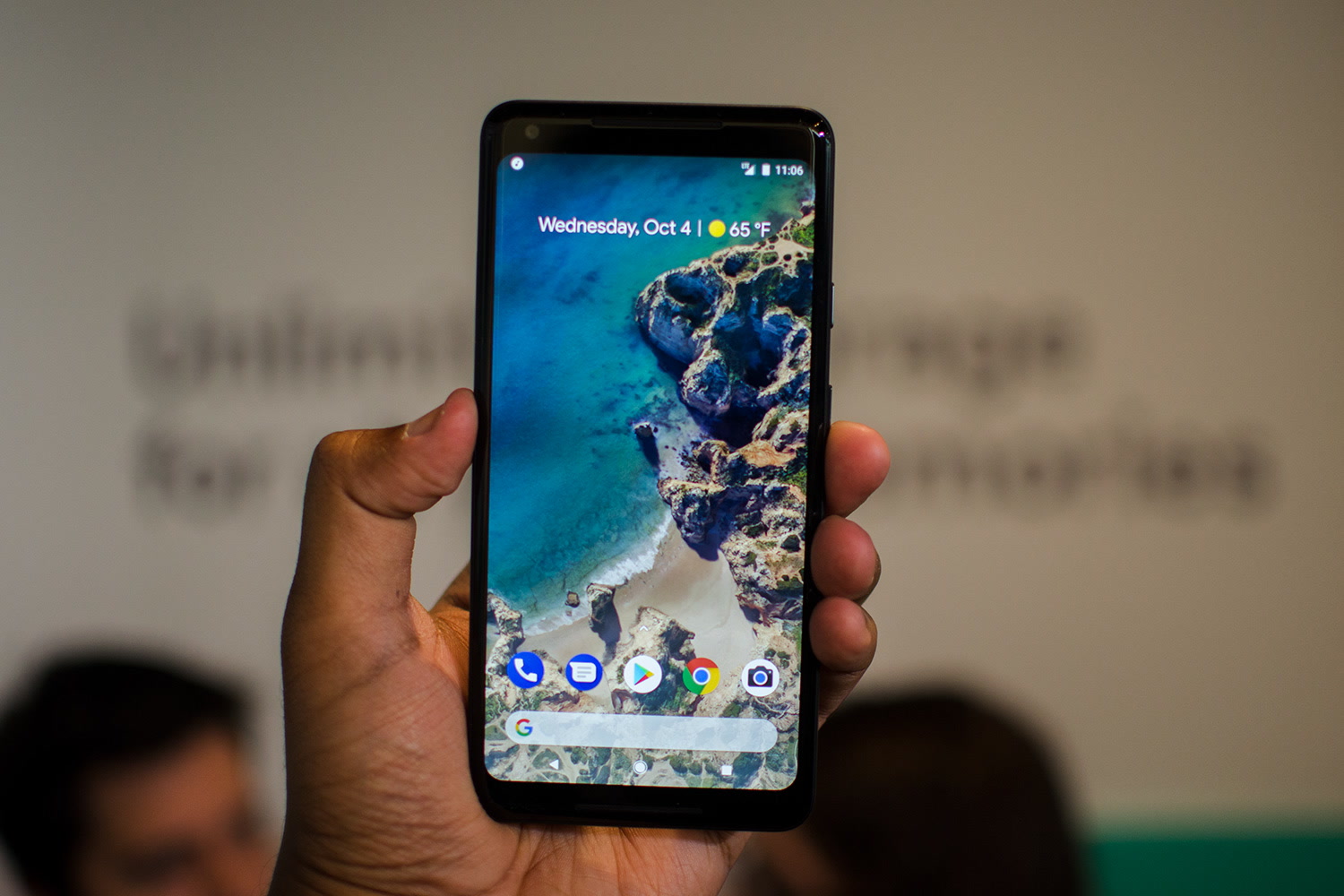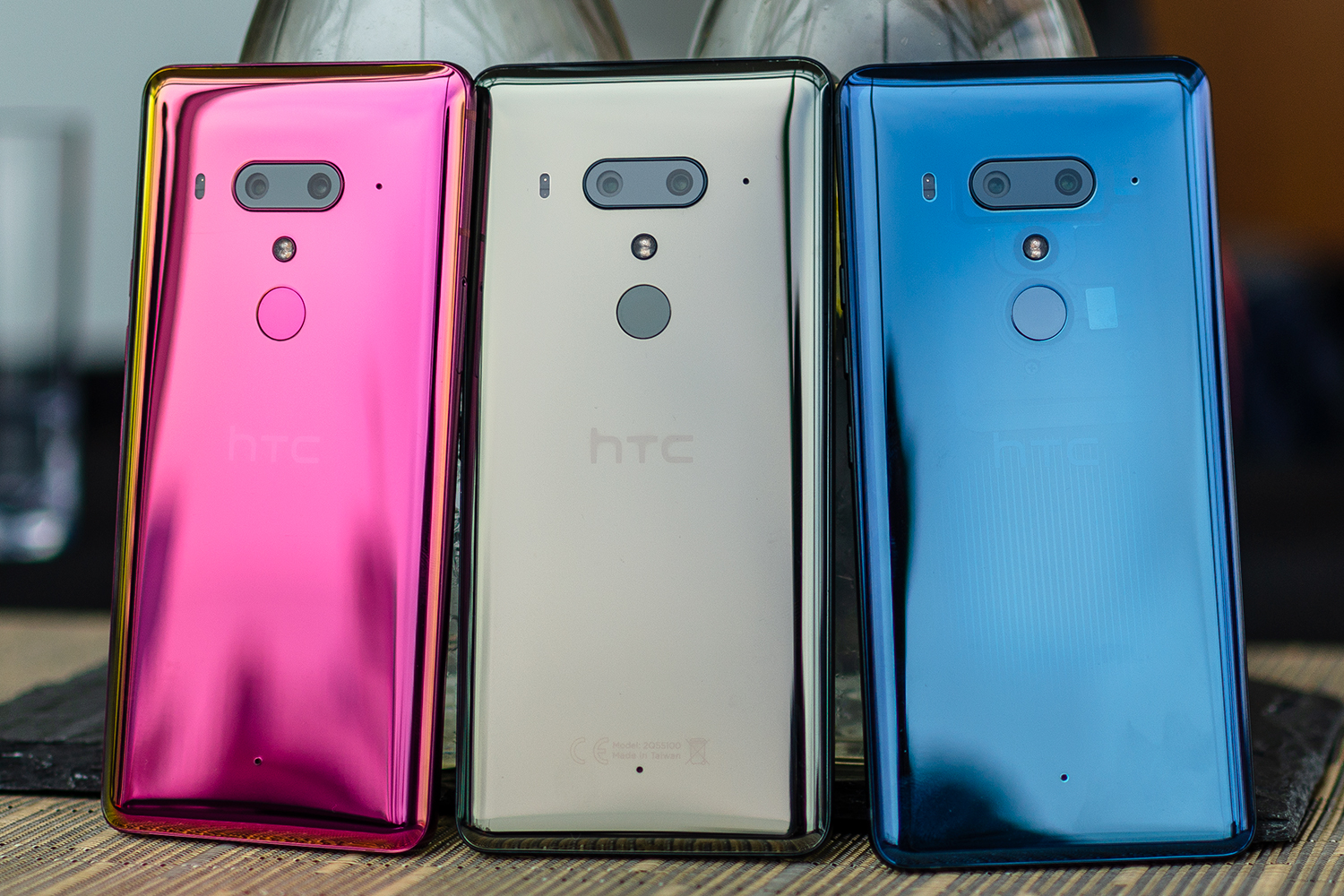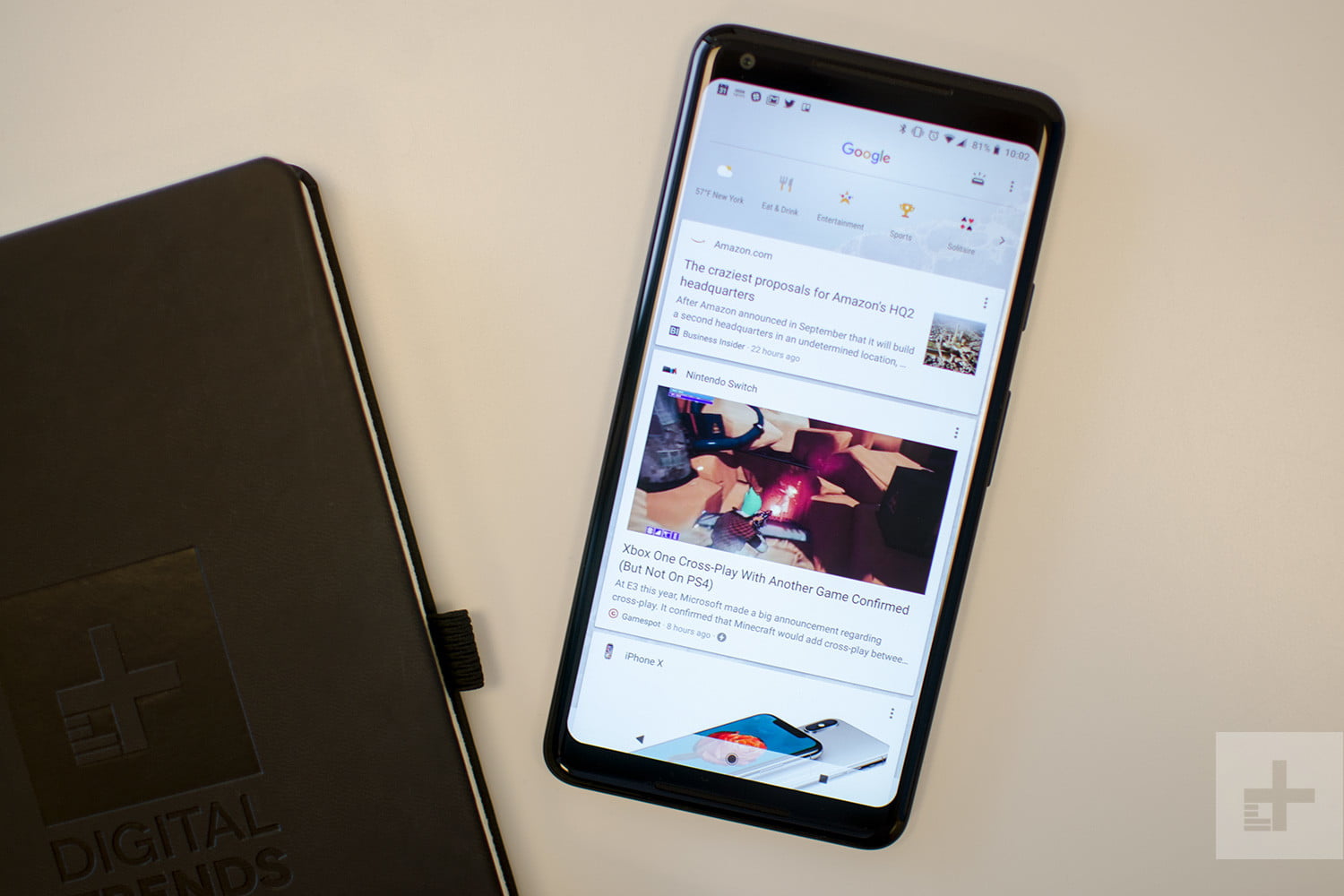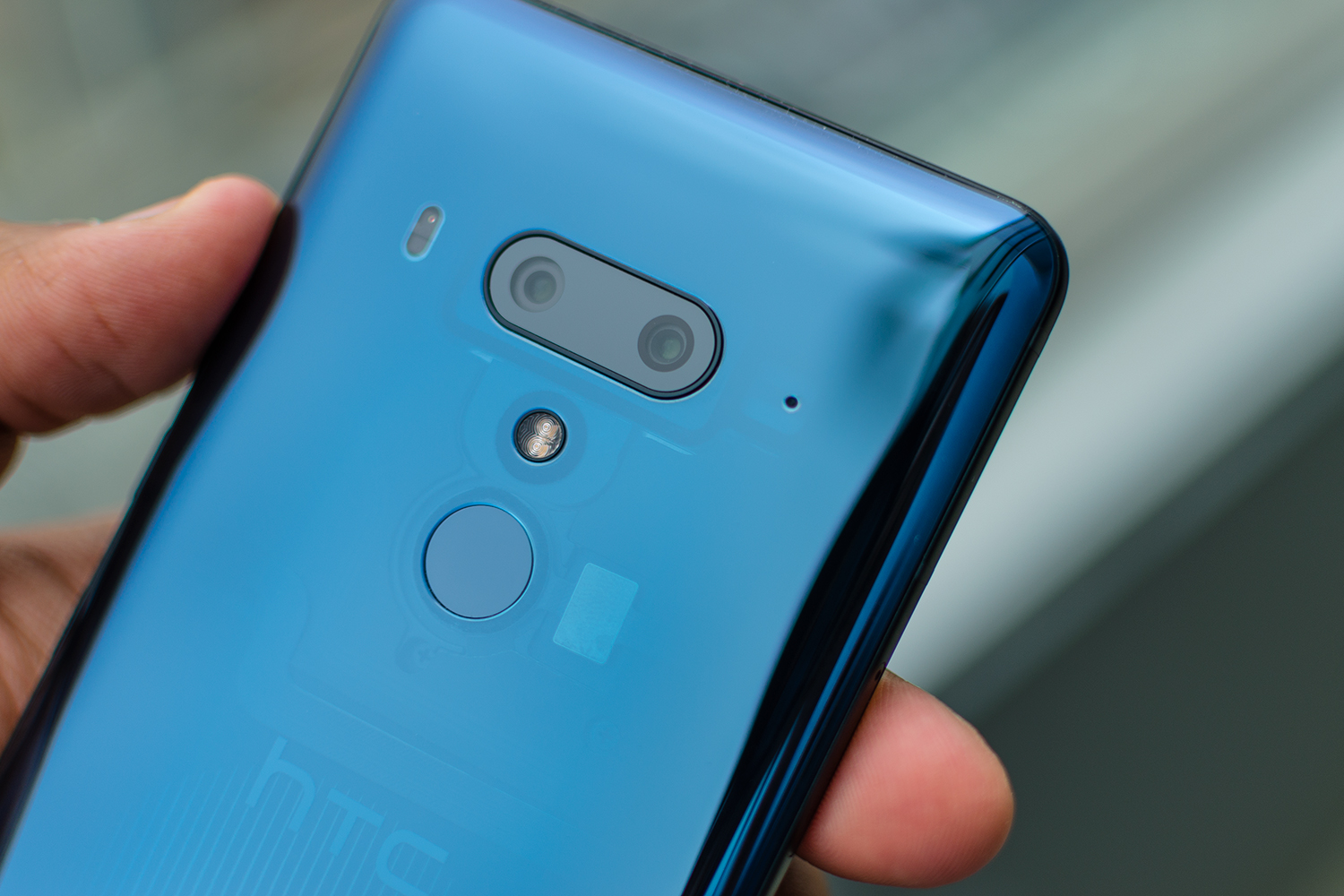HTC has finally unveiled the new HTC U12 Plus, its latest and greatest flagship phone aimed at taking on the likes of the Samsung Galaxy S9, LG G7 ThinQ, and the Google Pixel 2 XL. The new device boasts the latest Qualcomm chip, plenty of RAM, and dual-sensor cameras on both the front and the back.
But just how does it compare with the likes of the Google Pixel 2 XL, considered by many to be the best Android phone on the market? We put the HTC U12 Plus and Google Pixel 2 XL head-to-head to find out.
Specs
| HTC U12 Plus | Google Pixel 2 XL | |
| Size | 156.6 x 73.9 x 8.7 mm (6.17 x 2.91 x 0.31 inches) | 157.9 x 76.7 x 7.9 mm (6.22 x 3.02 x 0.31 inches) |
| Weight | 188g (6.63oz) | 175g (6.17oz) |
| Screen size | 6 inches | 6 inches |
| Screen resolution | 2,880 x 1,440 pixels | 2,880 x 1,440 pixels |
| Operating system | Android 8.0 Oreo | Android 8.0 Oreo |
| Storage space | 64GB, 128GB | 64GB, 128GB |
| MicroSD Card slot | Yes | No |
| Tap-to-pay services | Yes | Yes |
| Processor | Qualcomm Snapdragon 845 | Qualcomm Snapdragon 835 |
| RAM | 6GB | 4GB |
| Camera | Dual 12MP + 16MP rear, dual 8MP + 8MP front | 12.2MP rear, 8MP front |
| Video | 4K at 60fps, 1,080p at 240fps | 4K at 30 fps, 1,080p at 120fps, 720p at 240fps |
| Bluetooth version | Version 5.0 | Version 5.0 |
| Ports | USB-C | USB-C |
| Fingerprint sensor | Yes | Yes |
| Water resistance | IP68 | IP67 |
| Battery | 3,500mAh
Quick Charge 3.0 (QC 4.0 supported but requires separate charger) |
3,520mAh
Fast charging |
| App marketplace | Google Play | Google Play |
| Network support | T-Mobile, AT&T, Verizon | T-Mobile, AT&T, Verizon, Sprint |
| Colors | Translucent Blue, Ceramic Black, Flame Red | Just Black, Black & White |
| Price | $800+ | $849+ |
| Buy from | HTC | Google, Amazon, Verizon |
| Review score | Hands-on review | 4.5 out of 5 stars |
Performance, battery life, and charging

Both the HTC U12 Plus and Google Pixel 2 XL may be flagship phones, but that doesn’t mean that they feature the same specs. In fact, they don’t. The Google Pixel 2 XL, for starters, is a 2017 flagship, meaning that it uses the slightly outdated Qualcomm Snapdragon 835 processor and 4GB of RAM, compared to the Snapdragon 845 and 6GB of RAM on offer in the HTC U12 Plus. In other words, while the Google Pixel 2 XL will perform perfectly well for the vast majority of users, the HTC U12 Plus will simply be faster. It may not necessarily feel much faster because the stock Android experience on the Pixel 2 XL is as slick as they come.
Both of the phones offer options for 64GB or 128GB of storage, but the HTC U12 Plus has a MicroSD card slot — meaning you can expand upon that storage if you want.
When it comes to battery capacity, the phones are very similar. The HTC U12 Plus’ battery comes in at 3,500mAh, while the Pixel 2 XL has a 3,520mAh battery. Both the phones support Qualcomm’s Quick Charge 3.0.
In the end, the phones have some similarities, but the HTC U12 Plus has more raw power under the hood and expandable storage.
Winner: HTC U12 Plus
Design and durability

When it comes to design, the phones are a little different. The HTC U12 Plus features a glass-back design with a few different color options. It also offers a dual-sensor camera with a fingerprint sensor. The Google Pixel 2 XL also has a fingerprint sensor on its back, but only a single-lens camera and a half-glass back.
On the front, the two phones have some similar features. The display on the Google Pixel 2 XL features rounded corners and a forehead and chin — unlike many 2018 flagships. The HTC U12 Plus actually keeps the forehead and chin, doing away with the rounded corners on the display.
The phones are a little hit-and-miss when it comes to durability. The HTC U12 Plus features IP68 water-resistance, meaning it should withstand up to 1.5 meters of water for up to 30 minutes, while the Google Pixel 2 XL offers a IP67 rating, limiting the depth of water to 1 meter. Still, the glass back on the HTC U12 Plus means it’s more prone to shattering.
Winner: Tie
Display

Both the Google Pixel 2 XL and the HTC U12 Plus feature a 6-inch display, along with a resolution of 2,880 x 1,440 pixels. Where they differ, however, is in display type — while the HTC U12’s display is a Super LCD, the Google Pixel 2 XL instead offers a P-OLED display — meaning it should offer deeper blacks and slightly brighter colors.
Winner: Google Pixel 2 XL
Camera

Perhaps the most interesting thing to note about the HTC U12 Plus is that it features two dual-sensor cameras — one on the back, and one on the front. On the back of the phone, you’ll find a 12 megapixel wide-angle lens with an aperture of f/1.8, coupled with a 16 megapixel telephoto lens which has an aperture of f/2.6.
The Google Pixel 2 XL’s camera is a whole different beast. Google has decided to develop artificial intelligence to perform many of the same tasks you would expect from a dual-sensor camera, and it manages to do so pretty well. Many consider it to be the best phone camera on the market. The device has a 12.2 megapixel rear-facing camera with an aperture of f/1.8.
Around the front, HTC has again gone for the dual-sensor camera. The device offers a dual 8-megapixel camera aimed at applying Portrait Mode effects to selfies. The front-facing camera on the Google Pixel 2 XL comes in at 8 megapixels.
We’ll have to wait to see just how good the HTC U12 Plus’ camera really is. For now, this one’s a tie.
Winner: Tie
Software and updates

The HTC U12 Plus and Google Pixel 2 XL both currently have Android 8.0 Oreo, and they’ll both be getting the update to Android P, whatever it ends up being called, once it becomes available to customers. Still, when it comes to updates, Google will likely be much faster at getting them out to customers.
While the Google Pixel 2 XL offers a stock take on Android, HTC has made a few tweaks for the U12 Plus. The tweaks fall under the HTC Sense UI, and they include things like support for Amazon’s Alexa and an A.I. Companion.
Still, given the quick updates, we’re giving Google the win here.
Winner: Google Pixel 2 XL
Special features

HTC offers the innovative Edge Sense, a feature that allows you to squeeze the phone to activate certain functions. You can use it to open Google Assistant or snap a photo, for example. HTC has gone a step further this time around to allow users to double tap the side of the phone to activate a feature. Thankfully, Edge Sense is user programmable, so you can dictate what each action should do.
The U12 Plus also offers HTC’s BoomSound speakers, which aim to offer stereo sound through the bottom-firing speaker and top earpiece.
The Google Pixel 2 XL may feature stock Android, but that doesn’t mean it doesn’t have some cool features of its own — though most of those cool features are available on non-Pixel phones. For example, Google Lens, which offers intelligent image recognition, was expanded to other phones a few months ago.
Winner: HTC U12 Plus
Price
The phones are both flagship devices, but they don’t have the exact same price. The Google Pixel 2 XL starts at $850, while the HTC U12 Plus starts at only $800 for the 64GB version. For the 128GB Google Pixel 2 XL, you’ll need to shell out a cool $950, while the HTC U12 Plus 128GB model rings in at $850.
Overall winner: Google Pixel 2 XL
This is a close contest. The HTC U12 Plus may feature improved performance and newer specs, but the Google Pixel 2 XL is able to hold its own when it comes to things like the display. That begs the question: Which one should you buy? Well, if you’re looking for a phone with the best performance possible, then the HTC U12 Plus is an excellent choice. If, however, you prefer to get a stock Android experience with quick updates and the best camera software, the Pixel 2 XL still tops the charts.

